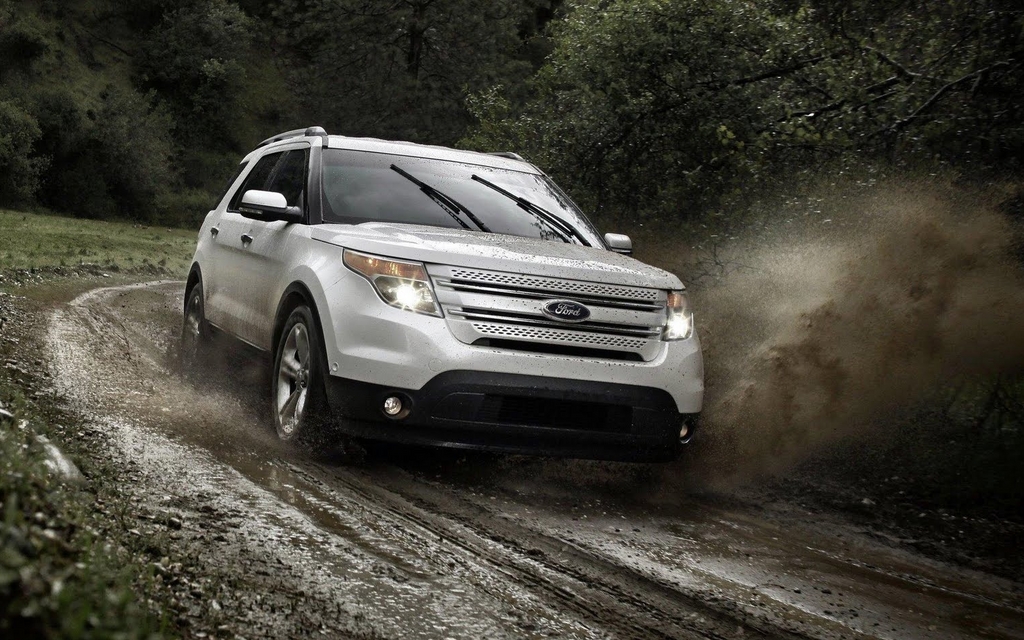2012 Ford Explorer EcoBoost: 2 Litres > 7 Passengers!

| Strong points |
|
|---|---|
| Weak points |
|
That Ford's newest and undeniably greatest Explorer is perhaps the first truly worthy successor to the most famous SUV ever is a fact that's already been discussed at great lengths; anything less would have fallen far short of expectations. However, that the big seven seater could be heartily motivated by a paltry two litres' worth of displacement underhood came as wee bit of a surprise.
At least it did to me. When I'd initially heard that Ford had slated the Explorer as one of the next models to receive its own EcoBoost engine, I'd assumed that it would be the 3.5 litre V6, installed to either augment or supplant the existing naturally aspirated V6. Subsequently, when I was informed that the engine in question would contain as much volume as the large bottle of Pepsi sitting in my fridge, I was understandably sceptical. The engine's ability to spin up to 16 pounds of boost through the intake manifold, the remarkable stratified direct injection system, its 10:1 compression ratio, and friction reducing components and coatings may have left me thoroughly impressed, but still I wondered if it wasn't an engine that would remain better suited to the upcoming, and smaller, Focus ST.
But after a week's worth of mixed driving, I am happy to report that I couldn't have been more wrong. Fitted to a nearly fully loaded XLT model that tipped the fiscal scales at just a buck shy of $50K, the little two litre's effect on the Explorer was more akin to that of its aforementioned refrigerated friend upon the average teenager: not exactly off-the-wall bonkers performance, but a peppy change nonetheless. While the existing V6 might be a slightly lustier engine at highway speed, the 2.0L turbocharged mill grinds out low end torque by the bushel, delivering the full brunt of its 270 pound-feet of torque from 2,500 rpm to 4,000 rpm. To put it in perspective, that massively flat torque curve... er... line, is a full 15 foot pounds higher on the dyno chart than you'll ever see delivered by the V6 Explorer. However, the same cannot be claimed for out and out horsepower. With 240 horses bubbling up somewhere between the svelte engine's turbocharger vanes and exhaust manifold (the whole kit and kaboodle weighing a full 55 pounds less than a "comparable naturally aspirated V6," according to Ford), the EcoBoost four pot gives up an admittedly substantial 50 horsepower to the bigger conventional V6.
Of course, not having to feed 50 horses pays dividends at the pump, and the Explorer nearly realized it's 10.4L/100 km city and 7.4L/100 km highway ratings. The most miserly vehicle in its class, the EcoBoost-equipped Explorer improves upon the standard set by the Toyota Highlander by 12 percent, while the Honda Pilot will burn through its fuel supply a full 20 percent faster. But, ratings only tell half the story, and what really surprised me was precisely how little the Explorer's fuel consumption responded to the varied driving patterns real life demands of a vehicle. Doing my best imitation of a pissed off commuter for days at a time (which is actually a very good impression indeed... then again, I should hope that it is after so many years' worth of diligent practice) netted just a .7L diminishment in fuel economy; an amount that was quickly recouped when I settled back into lazy geriatric driver mode (a mode my twenty-something self isn't quite as practiced at).
But that's probably enough geek speak; the real question is, how does it drive? Well... well. In case you skipped the precious 588 words previous, you can probably already tell that Ford's done their fair share of two-litre-fuelled homework on this engine, and when that much development goes into something, it's not likely to be a failure. Oh sure, it does find itself suffering from a pretty devious flat spot located in the chasm between breaking point of the torque line and the horsepower curve, and 240 horsepower really isn't that much with which to work with when hauling roughly 4,550 pounds around... but there's certainly many smaller vehicles endowed with similarly sized engines that would turn green with envy at the Explorer's performance figures. Capable of hitting 60 miles per hour in 8.0 seconds, it's actually only half a second slower than a 2.5 litre Volkswagen Golf. In fact, if I had to finger another vehicle as nearly analogous to the particular personality the 2.0L EcoBoost imbues upon the Explorer, I'd probably stick with that particularly torquey German hatchback of worldwide renown. Decently peppy but really in its element at slower speeds both over the ground and under the hood, it's not an engine that's well suited to the Explorer's more hard core talents; like towing or hauling around excess amounts of people and cargo. However, with those also being the least-used of the Explorer's talents, the EcoBoost makes perfect sense in the Explorer lineup, where it provides those in need of true seven passenger capacity, coupled with good driving manners, with an alternative to the Godforsaken minivan market that Ford no longer participates in. The only real question is whether or not this sparkling little turbo two litre leaves any room in the lineup for a naturally aspirated six.











